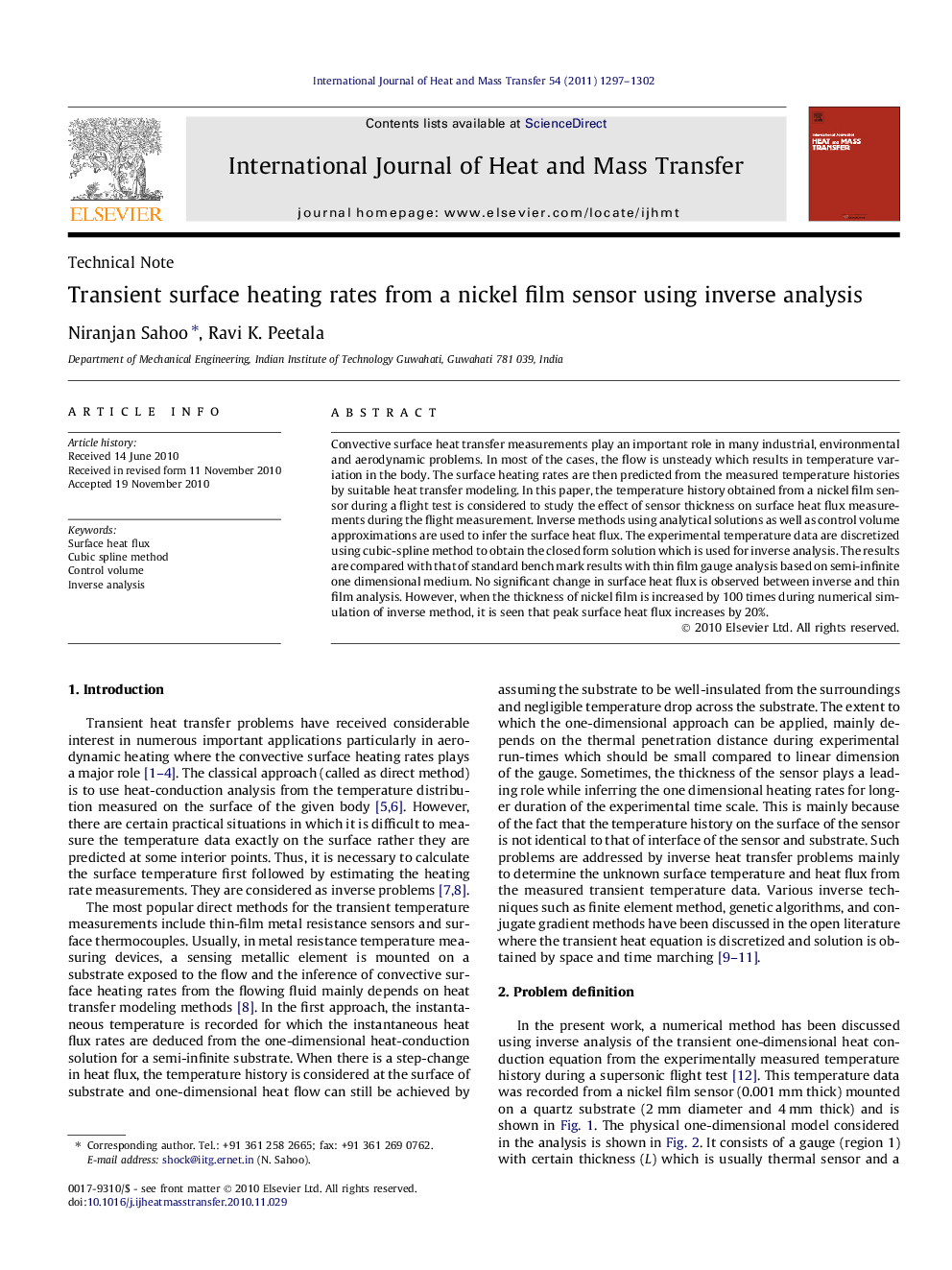| Article ID | Journal | Published Year | Pages | File Type |
|---|---|---|---|---|
| 7060026 | International Journal of Heat and Mass Transfer | 2011 | 6 Pages |
Abstract
Convective surface heat transfer measurements play an important role in many industrial, environmental and aerodynamic problems. In most of the cases, the flow is unsteady which results in temperature variation in the body. The surface heating rates are then predicted from the measured temperature histories by suitable heat transfer modeling. In this paper, the temperature history obtained from a nickel film sensor during a flight test is considered to study the effect of sensor thickness on surface heat flux measurements during the flight measurement. Inverse methods using analytical solutions as well as control volume approximations are used to infer the surface heat flux. The experimental temperature data are discretized using cubic-spline method to obtain the closed form solution which is used for inverse analysis. The results are compared with that of standard bench mark results with thin film gauge analysis based on semi-infinite one dimensional medium. No significant change in surface heat flux is observed between inverse and thin film analysis. However, when the thickness of nickel film is increased by 100 times during numerical simulation of inverse method, it is seen that peak surface heat flux increases by 20%.
Related Topics
Physical Sciences and Engineering
Chemical Engineering
Fluid Flow and Transfer Processes
Authors
Niranjan Sahoo, Ravi K. Peetala,
